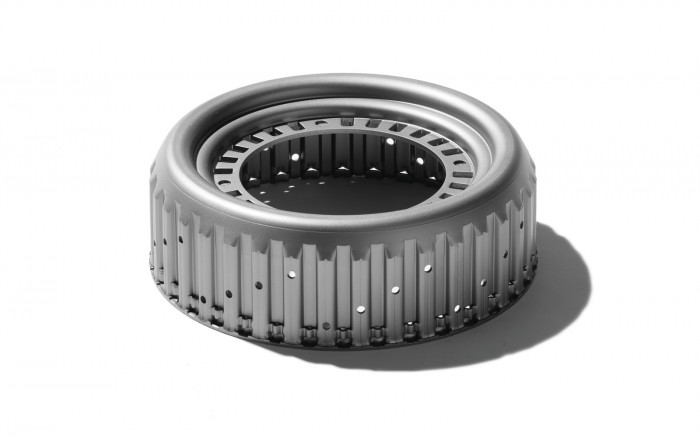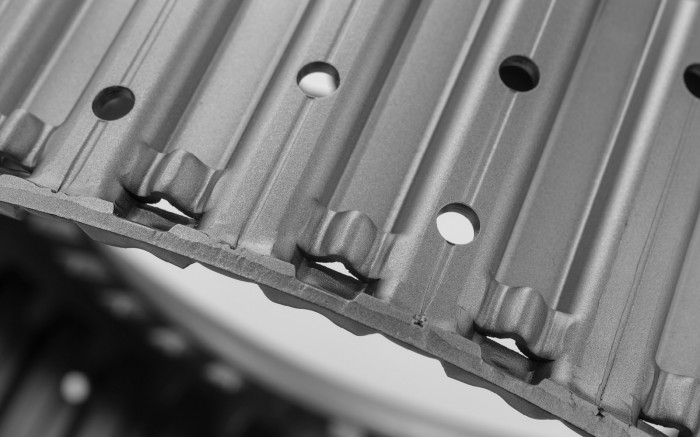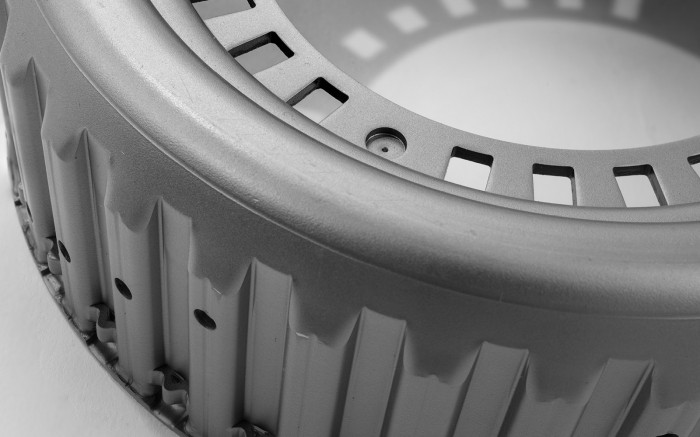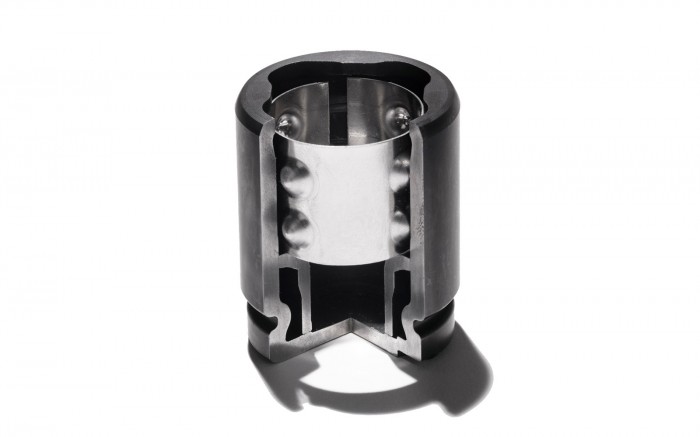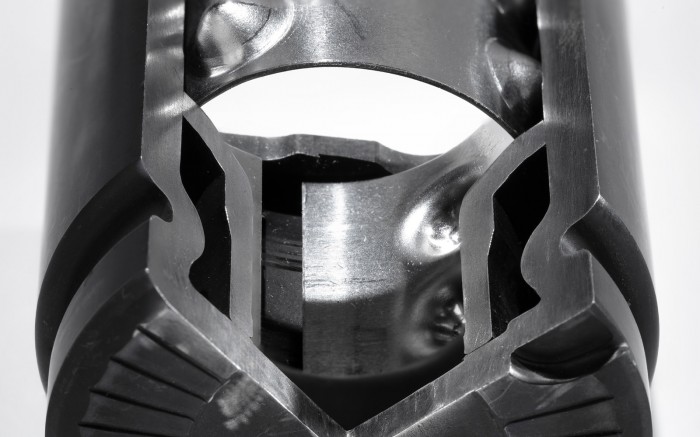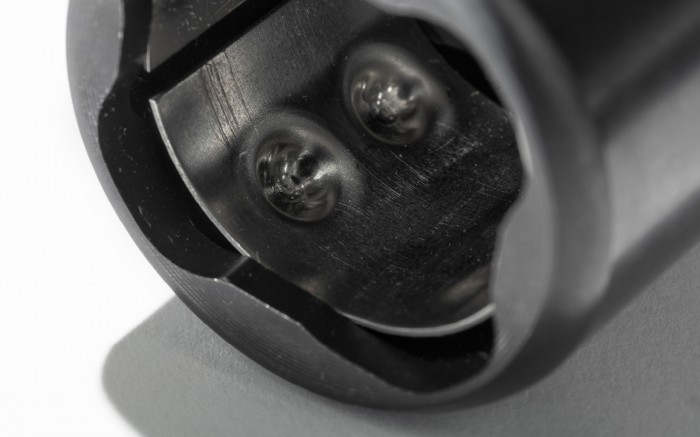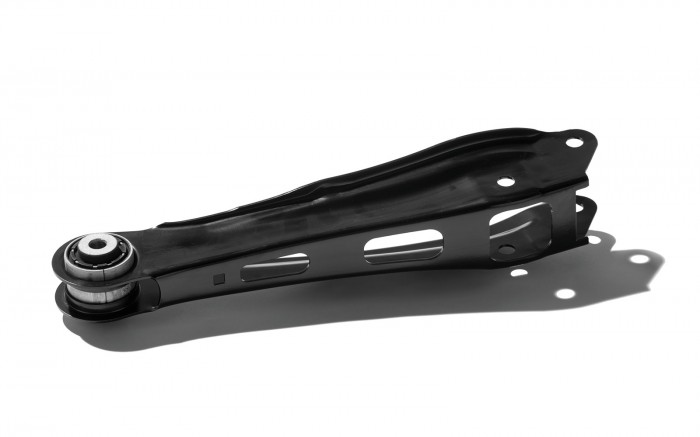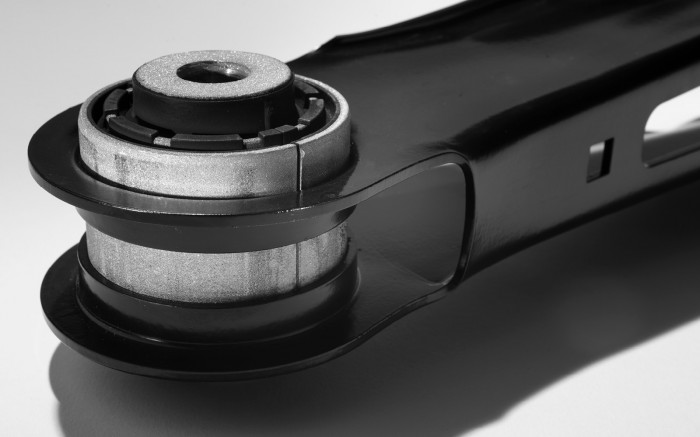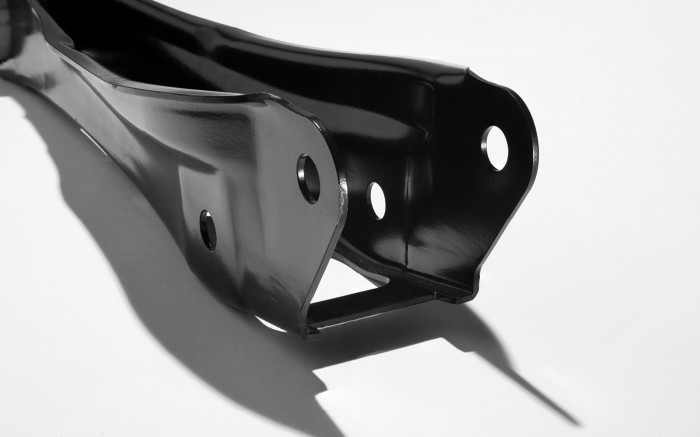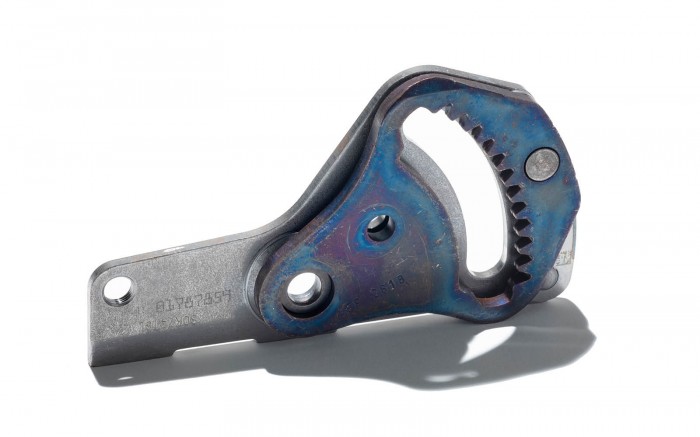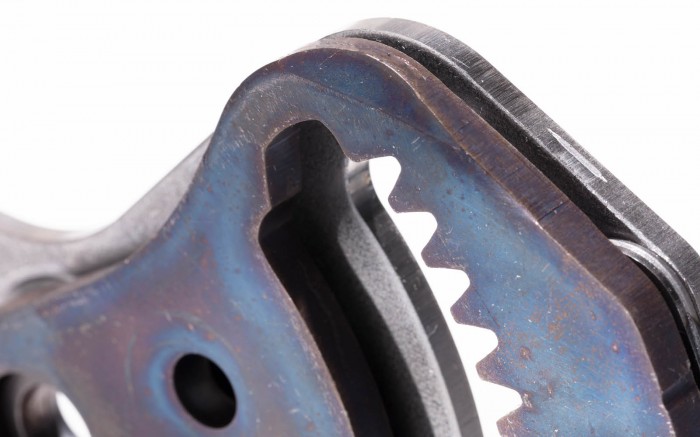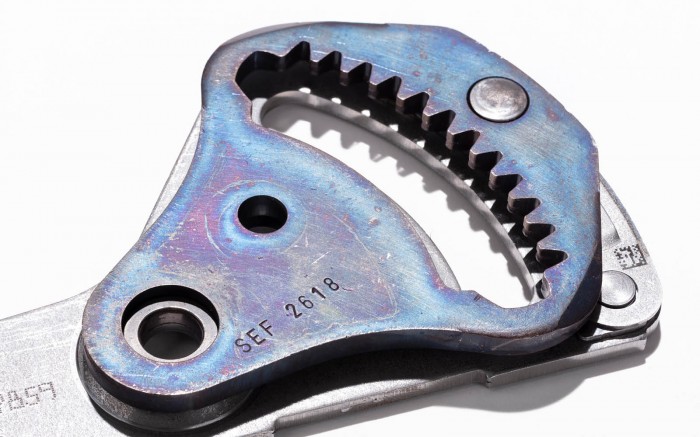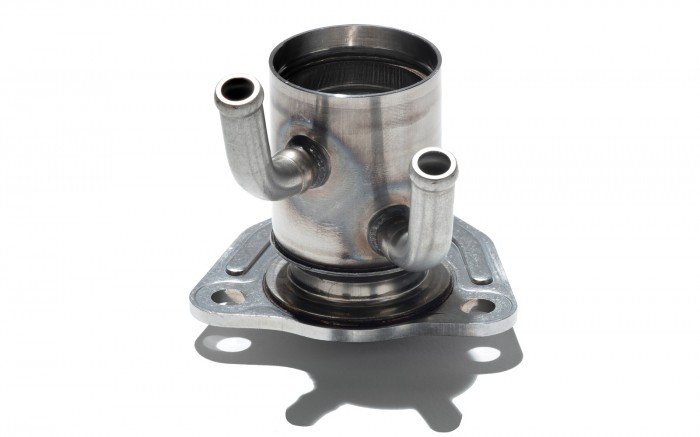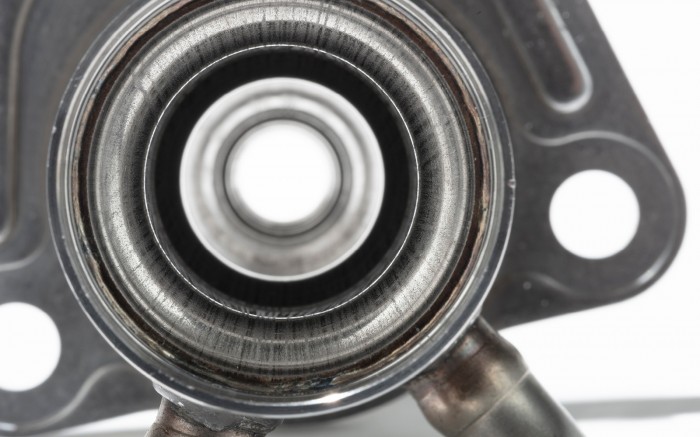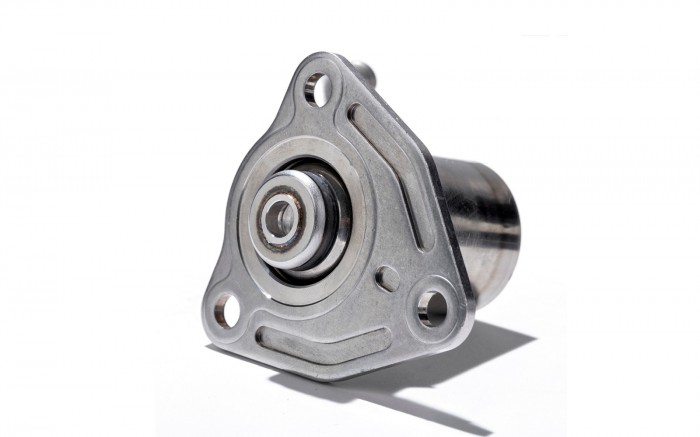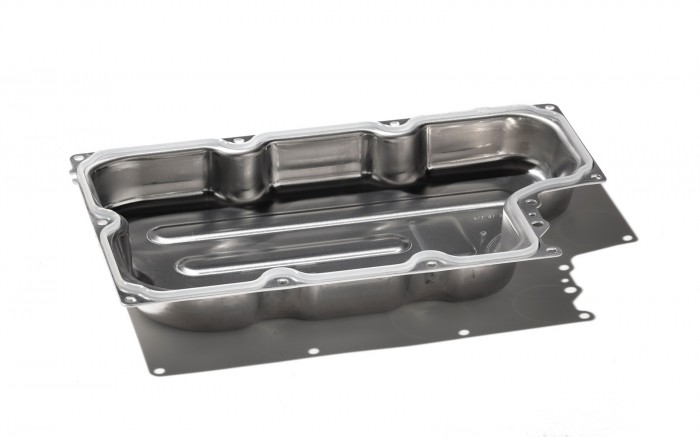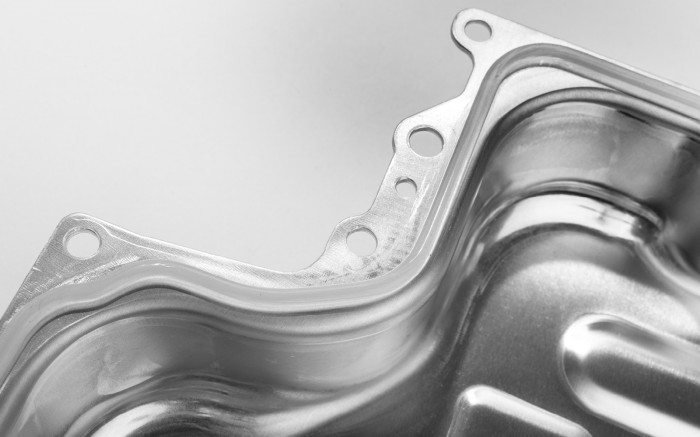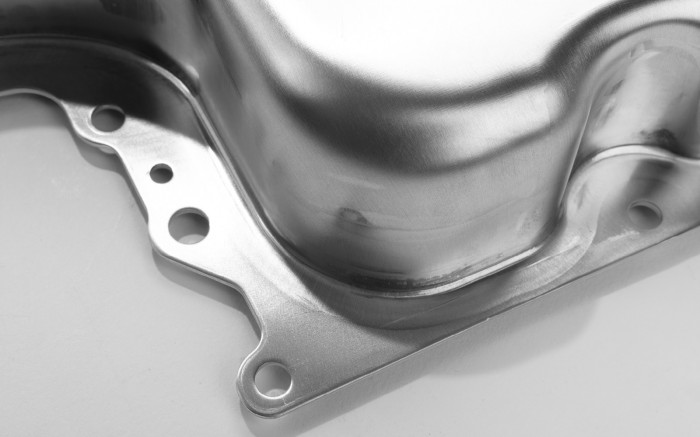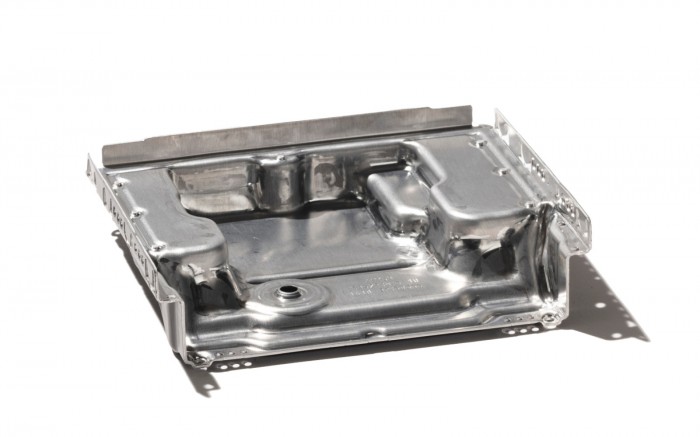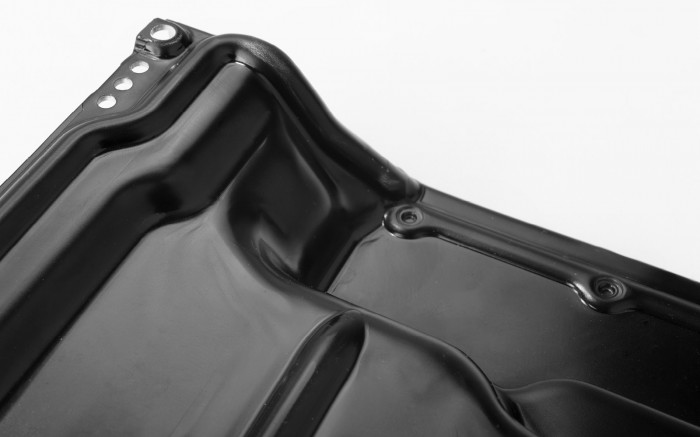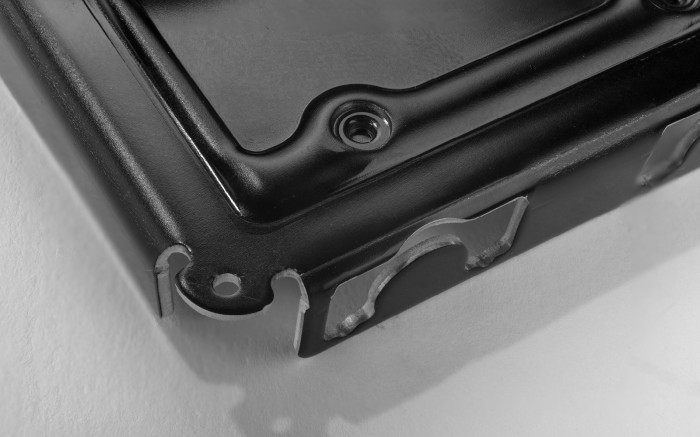Clean Toothing
As driver components disc carriers transmit the torque from the gearbox to the drive train. What sounds easy is highly complex in production. As with all gear parts, the highest precision and efficient technology are required for lamellar supports. The complex tooth profiles are not only deep-drawn. Where it helps, ingenious rolling tools are used in the punching process. These are specifically manufactured for this application in our own tool shop. Our highly innovative line production allows us to guarantee these levels of quality and still ensure that production is economical - now in runs of millions. Even special lamellar supports with hubs and hollow gears do not pose a challenge for us, thanks to our sophisticated component production.
Proven for Generations.
The success story of our brake pistons began in 1994, with the development of the first deep-drawn piston, which replaced the standard gray cast-iron piston. Thanks to the massive savings in costs and weight, our brake pistons quickly became a lasting success story.
Since then, Erdrich has been constantly improving its deep-drawn pistons, which are now in their fourth generation. Our portfolio of pistons covers diameters from 36 to 66 mm for front and rear axle applications. All pistons are optimized for minimum weight and maximum strength thanks to our optimized deep-drawing process. It is not for nothing that we have become one of the world's leading manufacturers of metal brake pistons for generations and to this day, with five highly automated production lines in four production plants worldwide and a capacity of approximately 40 million pistons per year.
Since then, Erdrich has been constantly improving its deep-drawn pistons, which are now in their fourth generation. Our portfolio of pistons covers diameters from 36 to 66 mm for front and rear axle applications. All pistons are optimized for minimum weight and maximum strength thanks to our optimized deep-drawing process. It is not for nothing that we have become one of the world's leading manufacturers of metal brake pistons for generations and to this day, with five highly automated production lines in four production plants worldwide and a capacity of approximately 40 million pistons per year.
The Balancing Factor in the Chassis.
Our suspension control arms support the static and dynamic forces and torques from the wheel mounts on the axle beam during travel. The components we have developed as formed sheet-metal parts usually stand out from aluminum forged links with similar geometry due to very clear weight and cost advantages - all standard requirements regarding driving safety and driving dynamics have also been met.
As a specialist for suspension control arms, we can carry out all of the steps necessary for development in-house, including design, simulation and safety - this makes us a competent development partner in this field. Suspension control arms are mass-produced in our plants in China, the USA, and Germany.
As a specialist for suspension control arms, we can carry out all of the steps necessary for development in-house, including design, simulation and safety - this makes us a competent development partner in this field. Suspension control arms are mass-produced in our plants in China, the USA, and Germany.
When the Seat Becomes a Guardian Angel
The Anti-Whiplash Assembly is welded to the seat rail. An energy-absorbing element dampens vertical forces in the event of an impact to protect the occupants of the vehicle. So it should come as no surprise that this safety-critical assembly requires the greatest care and the full range of our production engineering skill. Four stamped parts, fine-blanked parts, and a follow-on composite component are used. These are hardened, brush-deburred, and laser-welded, among other things. This turns seven individual parts into a highly complex riveted assembly. Despite these demanding requirements, production is fully automated. A robot packs the assembly directly into the corresponding final packaging for the customer. The data-matrix code (DMC), the alpha-numeric code and the System Application Product (SAP) system ensure full traceability of the component.
Keeps Cool when it Gets Hot.
The metering module serves as a heat sink for the AdBlue injection nozzle in diesel engines. Thanks to their cooling function, our dosing modules help to reduce nitrogen oxide emissions. A great deal of effort was put into the development of this sophisticated solution for a highly explosive problem in cooperation with customers. The main challenge was: how can a heat-resistant (up to 800°C), completely sealed, heat-dissipating component be produced that can be screwed to the exhaust system and can also be produced economically? You can't? There's no such thing with us!
This is how our dosing module was developed in a new type of stainless steel deep-drawing process combined with laser welding - for the benefit of the environment.
This is how our dosing module was developed in a new type of stainless steel deep-drawing process combined with laser welding - for the benefit of the environment.
High Performance for the Future
The DCDC housing is used in a hybrid transmission control system.
In the field of high-performance electronics, the highest demands are placed on cleanliness and tightness. The mix of limited space in the vehicle and effective heat dissipation requires complex forming processes, which must be calculated, simulated, and tested with prototypes before they can go into production. The high-precision aluminum housings are treated with the greatest care throughout the entire manufacturing process, from deep drawing to cleaning and siliconizing. We implement these high demands on efficient assembly systems tailored to the product.
In the field of high-performance electronics, the highest demands are placed on cleanliness and tightness. The mix of limited space in the vehicle and effective heat dissipation requires complex forming processes, which must be calculated, simulated, and tested with prototypes before they can go into production. The high-precision aluminum housings are treated with the greatest care throughout the entire manufacturing process, from deep drawing to cleaning and siliconizing. We implement these high demands on efficient assembly systems tailored to the product.
We Cover All the Bases.
Our covers and bases serve protect the control units, which as electronic components are responsible for the controlling how the automobile runs. Up to now these have mostly been produced by die casting; we offer the lightweight, cost-effective solution. We have mastered the extreme forming of the most difficult geometries with aluminum and galvanized sheet metal. The best possible level of dimensional accuracy and the highest standards in terms of cleanliness are a matter of course for us. Depending on the specific requirements, components are cleaned, marked under clean room conditions, and sealed in airtight packaging.

